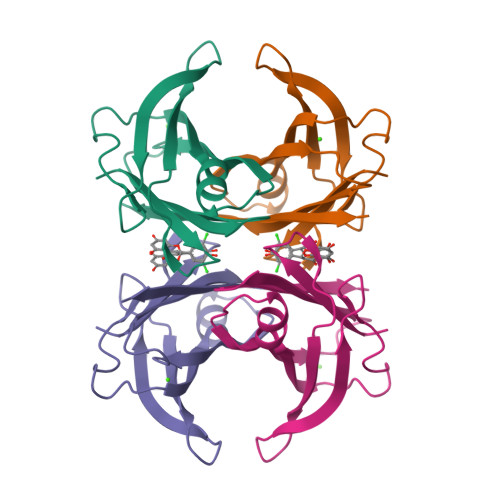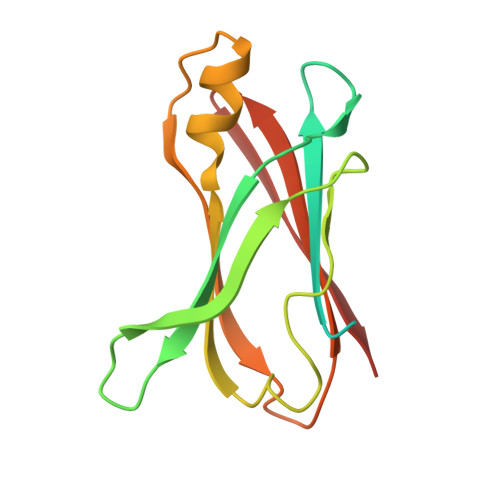Chlorinated Naringenin Analogues as Potential Inhibitors of Transthyretin Amyloidogenesis.
Mizuguchi, M., Nakagawa, Y., Inui, K., Katayama, W., Sawai, Y., Shimane, A., Kitakami, R., Okada, T., Nabeshima, Y., Yokoyama, T., Kanamitsu, K., Nakagawa, S., Toyooka, N.(2022) J Med Chem 65: 16218-16233
- PubMed: 36472374
- DOI: https://doi.org/10.1021/acs.jmedchem.2c00511
- Primary Citation of Related Structures:
7W9Q, 7W9R - PubMed Abstract:
Misfolding and aggregation of transthyretin are implicated in the fatal systemic disease known as transthyretin amyloidosis. Here, we report the development of a naringenin derivative bearing two chlorine atoms that will be efficacious for preventing aggregation of transthyretin in the eye. The amyloid inhibitory activity of the naringenin derivative was as strong as that of tafamidis, which is the first therapeutic agent targeting transthyretin in the plasma. X-ray crystal structures of the compounds in complex with transthyretin demonstrated that the naringenin derivative with one chlorine bound to the thyroxine-binding site of transthyretin in the forward mode and that the derivative with two chlorines bound to it in the reverse mode. An ex vivo competitive binding assay showed that naringenin derivatives exhibited more potent binding than tafamidis in the plasma. Furthermore, an in vivo pharmacokinetic study demonstrated that the dichlorinated derivative was significantly delivered to the eye.
Organizational Affiliation:
Faculty of Pharmaceutical Sciences, University of Toyama, Toyama 930-0914, Japan.




















